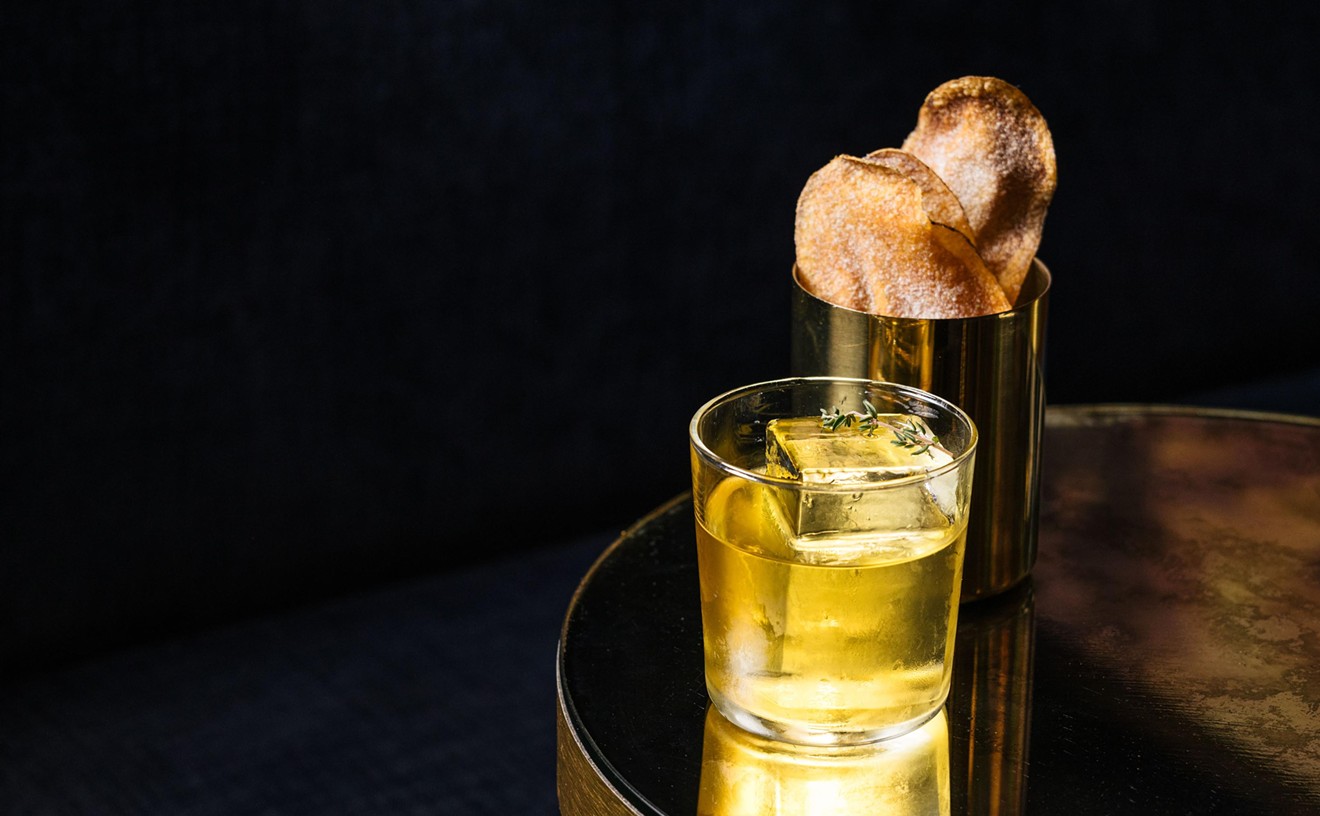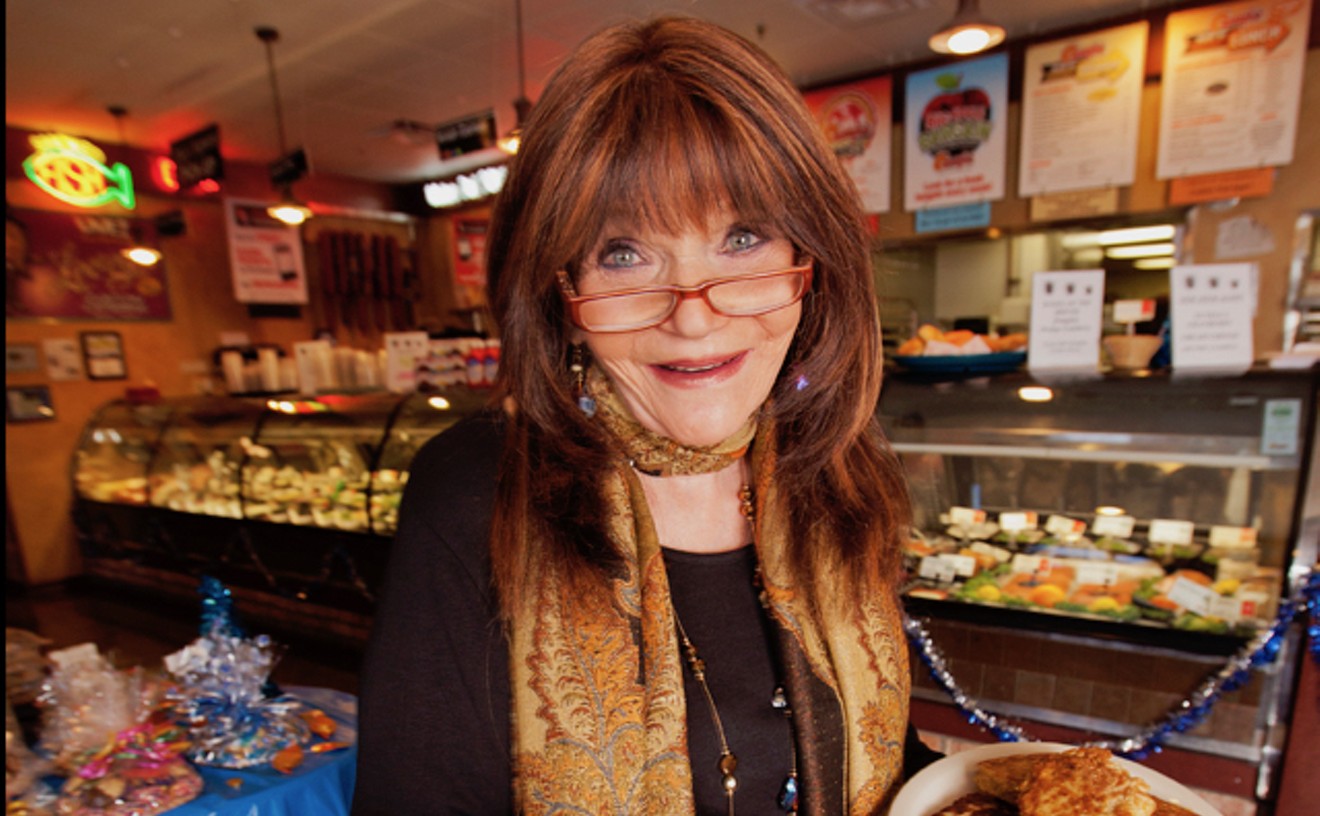Nobuo Fukuda Nobuo at Teeter House 622 East Adams Street, Phoenix 602-254-0600 www.nobuofukuda.com
See also: -- Tastemaker #59: Nobuo Fukuda -- 13 Favorite Cold Dishes in Metro Phoenix
This is part one of my interview with Nobuo Fukuda, chef-owner of Nobuo at Teeter House in Heritage Square in downtown Phoenix. Come back Tuesday when Fukuda discusses American sushi and Jiro Dreams of Sushi.
As a kid growing up in Tokyo in the '60s and '70s, Nobuo Fukuda didn't learn cooking at his mother's knee, and he certainly didn't dream of sushi. His mother, a teacher and Noh actor, supported the family while his retired older father played Mr. Mom, doing such a pathetic job in the kitchen that Nobuo and his sister began making their own obento (boxed lunch) to save face at school. "We got in the habit of being in the kitchen," Fukuda says, although the experience by no means inspired him to become a chef.
He did, however, aspire to move to the States, an idea that took hold of him at age 10, when he saw Neil Armstrong's moon rock at the 1970 World's Fair in Osaka. "I thought America was great," Fukuda says, and a decade later, he moved to Phoenix. Why here? Because he knew getting a green card would be much easier if he chose a city with a small Japanese population.
He immediately landed a gig as a teppanyaki chef at the original Benihana on Scottsdale Road in Old Town, admitting there really wasn't much serious cooking involved. In 1984, he moved to Ayako of Tokyo, where he stayed another four years, before migrating in 1988 to Fred Yamada's hot new sushi spot called Yamakasa.
The job was great, but he felt that working in a Japanese restaurant with Japanese colleagues did little for his assimilation into American culture. Because he liked to ski and loved the drama inherent in an emergency, he began thinking about getting a job on the ski patrol. But first, he'd have to get EMT certification, which meant hitting the books -- in English. Fukuda studied so hard he got ulcers, barely completing the hours-long certification test in time, but he passed.
He worked ski patrol in the White Mountains, spending his summers at Yamakasa when the snow melted. Yamada sent him to Ayako for training, and Fukuda also staged in Japan, but ski patrol was still his passion, and he spent nearly 10 years earning U.S. certification, which he says was a "huge deal," as well as one of the most meaningful accomplishments of his life.
One summer, he met his future wife, Sarah (also an avid skier), at Yamakasa, where she was working as a hostess. They married in 1996, but Fukuda was still living at the top of Apache Peak at 11,000 feet. She had no problem skiing down to the bottom of the mountain when she was eight months pregnant, but his employers weren't exactly keen on the legal ramifications of an accident, and Fukuda began to think about the restaurant business as a full-time thing, given his growing family.
He dreamed of opening his own café and wine bar, but knew nothing about what he calls "European-style cooking." It was 1999, and James McDevitt -- chef-owner of the former Hapa Restaurant in Scottsdale -- has just been featured as one of the Ten Best New Chefs in Food & Wine.
The notoriety gave McDevitt the wherewithal to expand his restaurant, and when he added a lounge, he invited Fukuda to man it. Fukuda accepted, turning out non-traditional sushi and sashimi with wine pairings. Word quickly spread that Hapa had become even more interesting than before.
Fukuda stayed for three years, but he wanted to do more cooking and intended to open his own place -- he planned to call it Monet in Japan -- a few doors down from Hapa. After 9/11, Fukuda's partner/investor disappeared. Soon after, however, Fukuda was approached by Peter Kasperski, who was expanding Ciao at the time as well as acquiring a small adjacent space. The two struck a deal and Sea Saw was born in July 2002. The very next year, Fukuda made Food & Wine's list of Ten Best New Chefs, receiving a personal call from editor Dana Cowin while he was eating his lunch. He didn't know who she was. In 2007, he won the James Beard award for Best Chef Southwest, and two years later, he closed Sea Saw, opening Nobuo at Teeter House the following summer (2010).
He continues to be one of the city's best and most meticulous chefs, sourcing pristine ingredients, combining them in inventive ways and making every plate an almost-too-pretty-to-eat work of art.
Favorite food smell: Caramelized soy, found in BBQ freshwater eel, grilled squid, and yaki tomorokoshi.
Ingredient you love to cook with: Konbu (dry kelp) because it gives Umami. It's natural MSG.
What's always found in your fridge at home?: Beer, white wine, Natto, and QP mayonnaise.
It's your day off. What are you eating and drinking?: I start my day (afternoon) with drinking beer and cooking traditional home-style Japanese food for my children. With dinner, I drink wine, and I finish my day with Shochu. Am I an alcoholic?
Your favorite cuisine, other than Japanese: I love Vietnamese food because of the fresh taste of herbs, spices, and citrus contrasted with Umami and salt (sometimes in the form of fish sauce).
Best food memory: When I was a child, I remember trying ramen for the first time. I was fascinated because it wasn't like traditional Japanese noodle dishes made with somen, soba, and udon. Egg noodles were new to me, and the soup tasted rich and fatty, whereas Japanese noodle soup is just soy with dashi.
What do you miss about Japan when it comes to food and cooking?: Accessibility. You can get top quality food anywhere -- from convenience stores to supermarkets. Everyone has access to the best produce, fish and meats. You can even buy top Wagyu beef in any store!
Are there fundamental differences between an American chef and a Japanese chef? In American cooking, there are many add-on flavors. In Japanese cooking, the add-ons are minimal. In fact, we take away. For example, we might take extra fat from a fish that would otherwise make for a more rich dish. We know taking the fat away means taking some of the flavor away too, but we call it Subtraction Cooking.
Enjoy this Chef Salad? Check out Nikki's previous interviews with: Vincent Guerithault of Vincent on Camelback, Vincent's Market Bistroc Helen Yung of Sweet Republic Jacques Qualin of J&G Steakhouse Claudio Urciuoli of Noca Matt Pool of Matt's Big Breakfast Jared Porter of The Parlor Charleen Badman of FnB Tony Abou-Ganim & Adam Seger Charlotte Voisey of Best American Brands Ambassador Steve Olson of Valley Ho Dough Robson of Gallo Blanco Edward Farrow of The Cafe at MIM Greg LaPrad of Quiessence & Morning Glory Cafe Joshua Johnson of Kai Todd Sicolo of T.Cooks Josh Riesner of Pig & Pickle Lester Gonzalez of Cowboy Ciao M.J. Coe of Federal Pizza Steven "Chops" Smith of Searsucker Aaron Chamberlin of St. Francis Michael Rusconi of Rusconi's American Kitchen Chrysa Robertson of Rancho Pinot Lynn Rossetto of The Splendid Table Cullen Campbell of Crudo DJ Monti Carlo Pete DeRuvo of Davanti Enoteca Chuck Wiley of Cafe ZuZu Justin Beckett of Beckett's Table Bryan Dooley of Bryan's Black Mountain Barbecue Silvana Salcido Esparza of Barrio Cafe Jeff Kraus of Crepe Bar Bernie Kantak of Citizen Public House James Porter of Petite Maison Johnny Chu of SoChu House Neo Asian + Martini Bar Stephen Jones of Blue Hound Kitchen & Cocktails Chris Gross of Christopher's Restaurant and Crush Lounge Chris Curtiss of NoRTH Arcadia Payton Curry of Brat Haus Mark Tarbell of Tarbell's Josh Hebert of Posh Kevin Binkley of Binkley's Restaurant Lori Hashimoto of Hana Japanese Eatery Larry White Jr. of Lo-Lo's Fried Chicken & Waffles Chris Bianco of Pizzeria Bianco, Bar Bianco, Pane Bianco and Trattoria Bianco Ehren Litzenberger of BLD Matt Taylor of Market Street Kitchen Kelly Fletcher of House of Tricks Jeremy Pacheco of Lon's Michael O'Dowd of Renegade by MOD Gio Osso of Virtu Honest Craft










